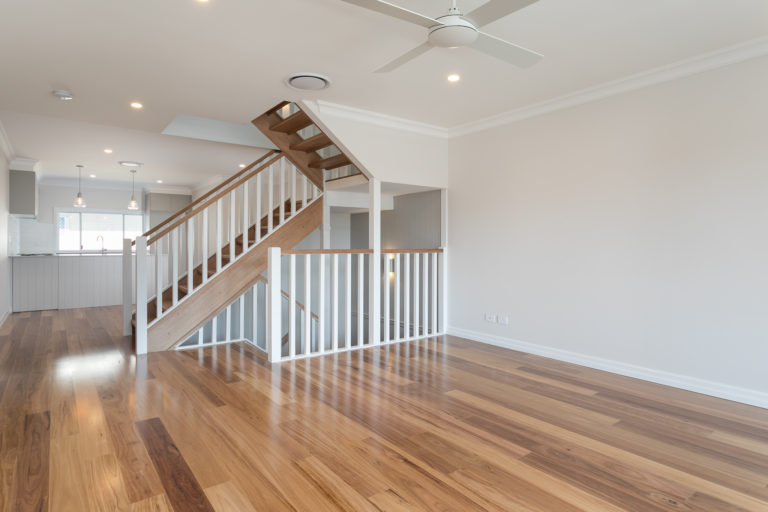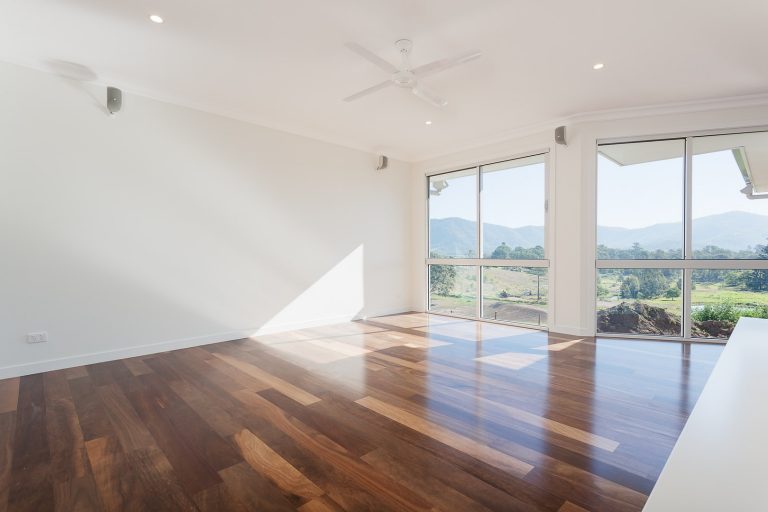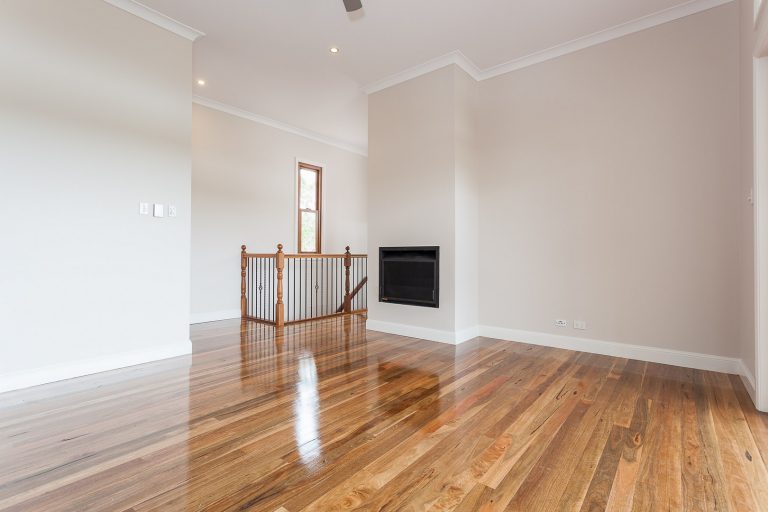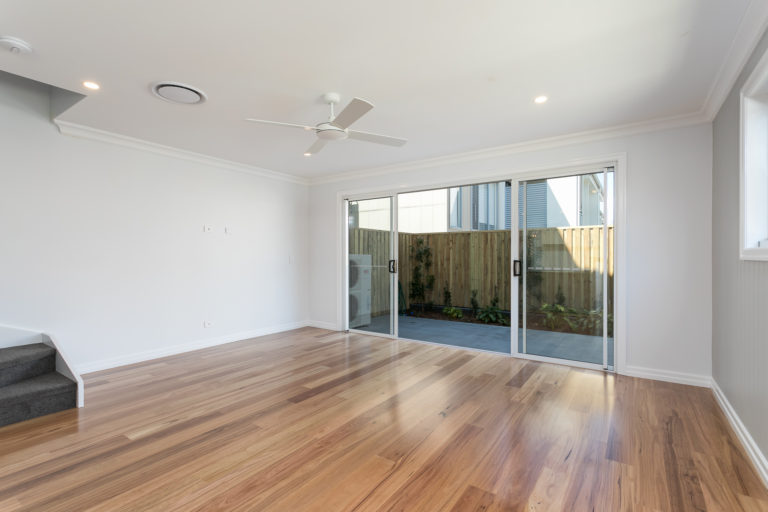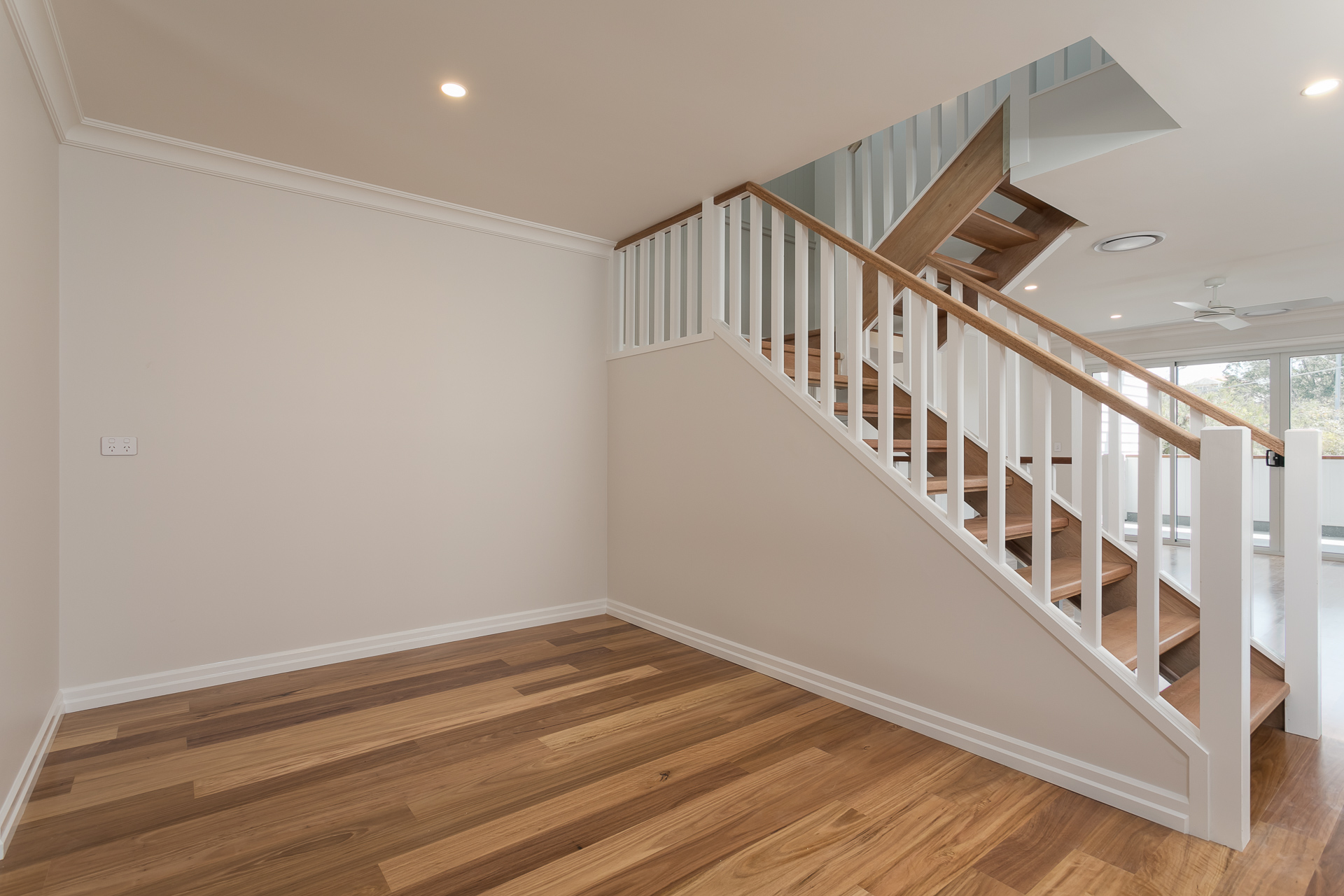
Our Blog
Timber Floor Maintenance
Timber floors are long term investments for custom homes. WIth care and a small amount of maintenance, timber flooring can last a lifetime. The following advice for timber floor maintenance, can help you get longevity out of your timber floors and keep them looking good as new.
Care After Install
- Before placing any furniture, make sure to wait 48 hours after the application of the final coat of varnish (not applicable for pre-finished floors)
- Wait at least two weeks after the final coat is applied before placing rugs down. This way, you can be sure that the varnish will be properly cured.
Protect Your Timber Floors
- Fit protective pads to furniture legs to reduce the risk of marking the floor
- Protect the floor surface by using protective mats for furniture with castors.
- If laying rugs, lay over clean floors so dirt is not stuck underneath
- Use dirt trapping mats at all outside entry points to reduce the amount of grit and dirt to be brought inside. Dirt and grit can create scratches and extra wear in timber flooring. Rugs and hall runners will also collect excess dirt and grit, aiding in scratch reduction.
- High heeled shoes can dent a hard floor surface. Special care should be taken to remove shoes that have exposed heels with sharp points to prevent potential damage to flooring.
- Pets with long nails or claws can scratch and dull the floor finish, make sure pet nails or claws are trimmed regularly and kept blunt.
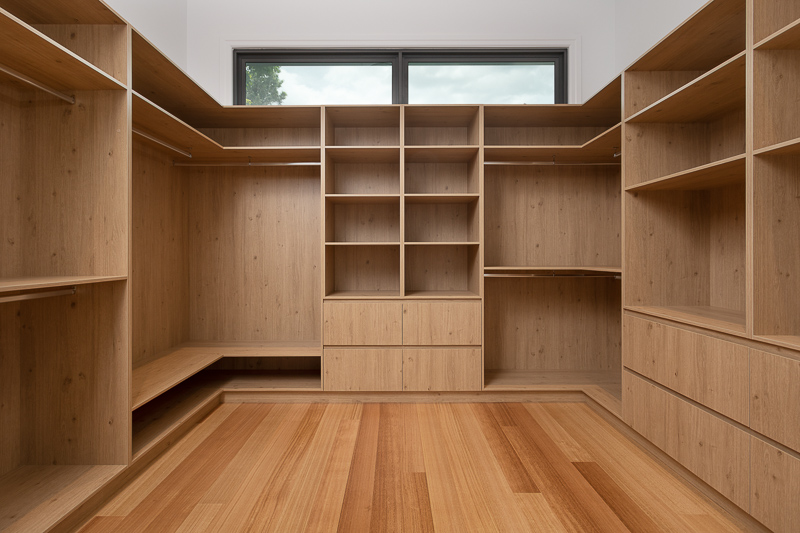
Maintenance Tips
- All timber floors can fade, darken or change shades over time. Exposure to sunlight will increase the process. Rotate rugs periodically and protect the flooring from direct sunlight using curtains or blinds.
- In areas where extreme temperature changes or moisture variation are common, gaps or cupping may appear in the floor. Maintain an ambient temperature to avoid dryness that may cause gaps, and moisture increases potentially leading to cupping.
- Regularly remove surface dirt and grit using a vacuum, with a soft bristle head or electrostatic attachment, or sweep with an electrostatic mop.
- For stubborn dirt, damp-mop the floor using a well rung mop. The use of a pH neutral floor cleaner can help remover stubborn dirt (use as per the manufacturer’s instructions)
- Never clean hardwood flooring with common household detergents, polishes, steel wool pads, wax or similar products. These products can be too abrasive, scratch the surface or make the floor dangerously slippery. Some products may also leave a film of silicon or wax on the timber which may hamper the re-coating the floor in the future.
- Never use Methylated Spirits or Kerosene, as any type of petroleum distillate will degrade the coating and irreversibly dull the floor. Only use a pH neutral floor cleaner.
- Use only quality lint free floor mops and thoroughly wash new mops to remove any lint.
- Wipe up spills and leaks promptly with a dry cloth or dry paper towel. For sticky substances, moisten the cloth slightly.
- Over wetting a floor when mopping or cleaning can change the moisture balance and cause a floor to expand, resulting in cupping. For this reason, its important to make sure that mops and cloths are well wrung to prevent excess water wetting the timber.
- Steam mops are not recommended for cleaning timber floors. Moisture is forced into the joints of the timber and any small incisions, break or cracks on the timber floor surface resulting in unusual reactions in the timber, such as cupping. The heat from the steam mop could also cause damage to the floor coating.
Check Out Our Work.
Take a look at our portfolio of projects featuring quality renovations, custom homes and high end units in Brisbane.

